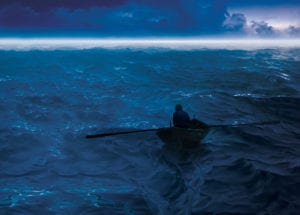December in the Southern Hemisphere equals summer heat and the end of the school year, but thanks to the winds from the north we still get snowflake and icicle lighting on the streets of Rio de Janeiro and the ever-present image of that famous obese man promising presents, provokingly overdressed with those boots and red coat.
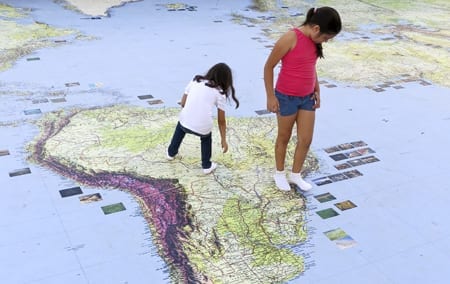
Let’s begin this confusing month with our classic news update on Ocean Acidification and the state of the world’s seas:
≈≈≈≈This past Tuesday Governor Chris Gregoire made Washington State the first to adopt a policy to take on Ocean Acidification after signing an executive order underscoring the importance of recommendations from her Blue Ribbon Panel On Ocean Acidification. The order signed by Gregoire, whose term will end in January, calls on the state to invest more money in scientific research, curb nutrient runoff from land, and push for cuts in greenhouse gas emissions on a regional, national and global scale.
“A healthy ocean is critical to our health and our coastal economies. We have learned that human caused emissions of carbon dioxide are dramatically altering the ocean’s chemistry at an alarming rate. These emissions, mostly resulting from burning fossil fuels, are now threatening our ocean ecosystems. Ocean acidification is yet another reason to quickly and significantly reduce emissions of carbon dioxide across the planet,” said Gregoire.
“Let’s get to work,” Gregoire told audience at the Seattle Aquarium, adding that she would propose that the legislature reallocate $3.3 million in state funding to pay for research and other actions. “Let’s lead the world in addressing this global challenge.”
Washington State Blue Ribbon Panel strategic response on PDF
SOURCE 1
SOURCE 2
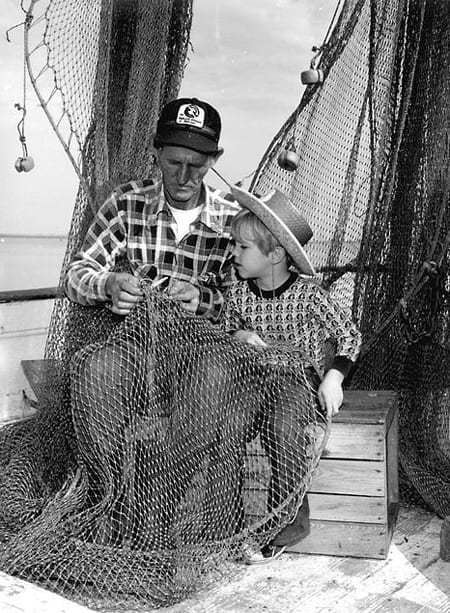
Mending the Nets (State Library of Florida)
≈≈≈≈Scientists from NOAA, British Antarctic Survey, Woods Hole Oceanographic Institution and the University of East Anglia discovered severe dissolution of the shells of living pteropods in the Southern Ocean during a science cruise in 2008.
The team examined an area of upwelling, where winds cause deep cold water to be pushed upwards from around 1,000 meters to the surface of the ocean. Upwelled water is usually more corrosive to a particular type of calcium carbonate (aragonite) that pteropods use to build their shells. The point at which this occurs is known as the “saturation horizon”. The team found that the combined influence of ocean acidification and natural upwelling meant that in some areas the saturation horizon was around just 200m – the upper layer of the ocean where pteropods live.
“Co-author and science cruise leader, Dr Geraint Tarling from BAS, said: “Although the upwelling sites are natural phenomena that occur throughout the Southern Ocean, instances where they bring the ‘saturation horizon’ above 200m will become more frequent as ocean acidification intensifies in the coming years. As one of only a few oceanic creatures that build their shells out of aragonite in the polar regions, pteropods are an important food source for fish and birds as well as a good indicator of ecosystem health. The tiny snails do not necessarily die as a result of their shells dissolving, however it may increase their vulnerability to predation and infection consequently having an impact to other parts of the food web.”“
The results of the study are published in the journal Nature Geoscience.
SOURCE 1
SOURCE 2
≈≈≈≈Interested in carrying out your own Ocean Acidification lab research and experiments? The University of Washington offers hourly usage of their Ocean Acidification Environmental Laboratory. There is even a self-service option available to those experienced with carbonate chemistry measurements. Contact the OAEL Manager, Dr. Michael O’Donnell for guidance on fee structure and the application process.
MORE INFO
≈≈≈≈Digging around I found this 16 minute piece of Brad Warren speaking about Ocean Acidification at the 2012 NW Straits Marine Resource Committee Annual Meeting, held in Port Townsend, Washington.
SOURCE
≈≈≈≈Serge Dedina has put up a list at the Coronado Patch with what he sees as “the top coastal issues we need to address in 2013 and beyond”. The list includes climate change, Ocean Acidification, coastal restoration, sand replenishment, marine protected areas and coastal pollution. Read the article HERE
≈≈≈≈The Smithsonian Magazine recently published the results of new research done by Georgia Institute of Technology revealing how corals send out chemical signals to recruit the help of goby fish in removing toxic seaweed. If turtle weed, a toxic seaweed that causes bleaching, gets tangled up on coral branches “the researchers worked out how the coral contacts the gobies to let them know that they need their hedges trimmed. Once the coral gets hit with chemicals from the invading turtle weed, it releases its own chemical signal—an emergency call to gobies—within 15 minutes. And, within another 15 minutes or less, gobies receive the message and swoop in to nibble away at the encroaching foliage.”
“It’s also possible that such subtle chemical signals could be disrupted by ocean acidification. Clownfish and damselfish raised in seawater with the acidity scientists predict we’ll see in the year 2050 have trouble identifying scents in seawater to find their homes or avoid predators. If these gobies have similar problems, the impacts of acidification on reef communities could be greater than expected.”
READ MORE of this interesting article talking about the importance of biodiversity.
≈≈≈≈Short CBS8 video on Ocean Acidification and a lecture series that took place last month at Birch Aquarium in San Diego, California.
San Diego, California News Station – KFMB Channel 8 – cbs8.com
SOURCE
≈≈≈≈Scientists from the University of Rhode Island are using a 264,000-gallon salt water tank at the U.S. Army Cold Regions Research and Engineering Laboratory to simulate the surface of the Arctic Ocean. They hope to understand how diminishing ice coverage will affect the concentrations of atmospheric gases. You can read more about their work in THIS Wired Magazine article by Jeffrey Marlow and/or watch the time-lapse video of an ice-coverage experiment:
≈≈≈≈Postdoctoral Fellowships: The Smithsonian Environmental Research Center offers postdoctoral fellowships for applicants interested on either of two projects:
“1)Effects of diel-cycling hypoxia and pH on estuarine fish, shellfish and food webs. This project is based in Chesapeake Bay and the Delaware Coastal Bays and includes laboratory experiments, field studies and modeling components. We’ve developed a laboratory system that is capable of simulating daily cycles of dissolved oxygen and pH in up to 5 simultaneous treatments. Strong collaborations with management agencies facilitate field experiments and sampling.
2)Mangrove ponds as a model system to study acidification. This work takes advantage of the Smithsonian’s network of field stations in Belize and Panama and could be expanded to FL as well.“
Fellowship information can be found at http://www.serc.si.edu/pro_training/fellowships/postdoc.aspx. The deadline is January 15.
≈≈≈≈The folks at Infographicsmania have created a cool graphic about oceans carbon pollution that can be downloaded or shared HERE
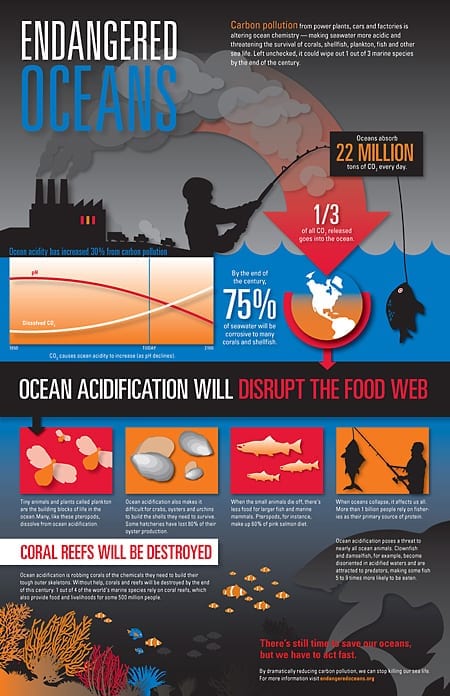
≈≈≈≈The U.S. National Oceanic and Atmospheric Administration (NOAA) and New Zealand’s National Institute of Water and Atmospheric Research (NIWA) signed a letter of intent to expand the range of their joint research projects on November 13th. Possible future cooperation will likely include research on Ocean Acidification and deep sea exploration.
SOURCE
≈≈≈≈Check out the WORLD CLOCK for the year 2012 to see in real time population increases across various regions and worldwide, what the major causes of death and illness are, our global food production and consumption, CO2 emissions, deforestation, extinction of species or energy consumption (to name but a few).
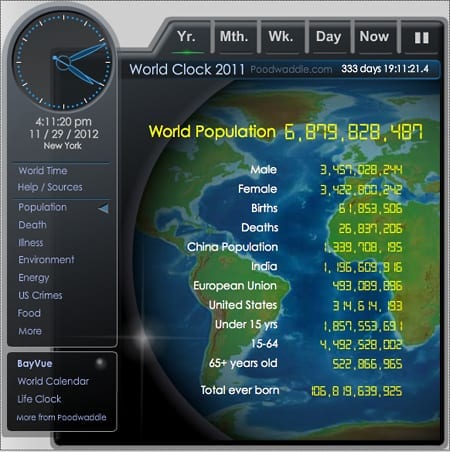
Screenshot of the World Clock
≈≈≈≈International Conference on Arctic Ocean Acidification to be held in Bergen, Norway, 6-8 May 2013.
“The Conference will present the results of the Arctic Monitoring and Assessment Programme (AMAP) assessment on Arctic Ocean Acidification, lead by Richard Bellerby, Howard Browman and Lars-Otto Reiersen.
Conference Organisers are AMAP, Institute for Marine Research (IMR), Norwegian Institute for Water Research (NIVA), Scientific Committee on Oceanic Research (SCOR), and University of British Columbia (UBC).“
PDF with more information.
SOURCE


